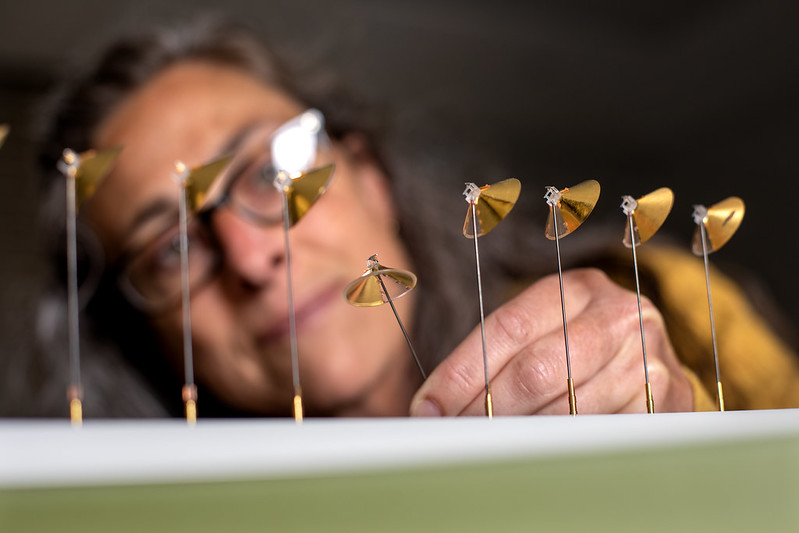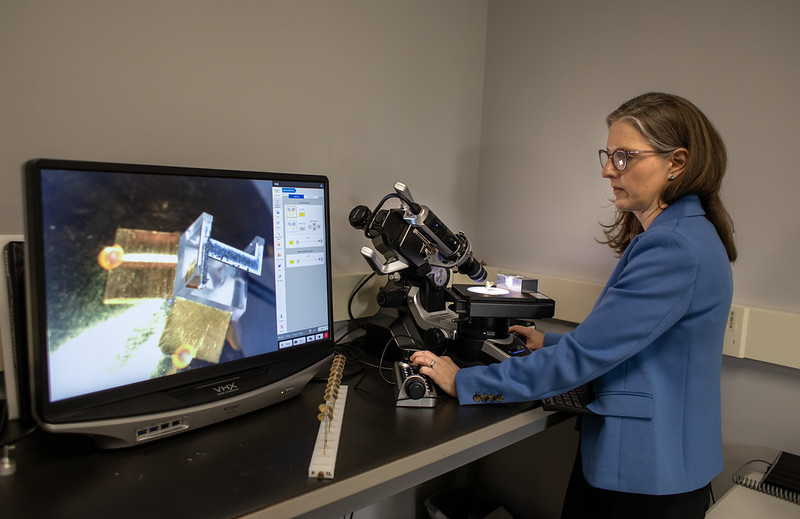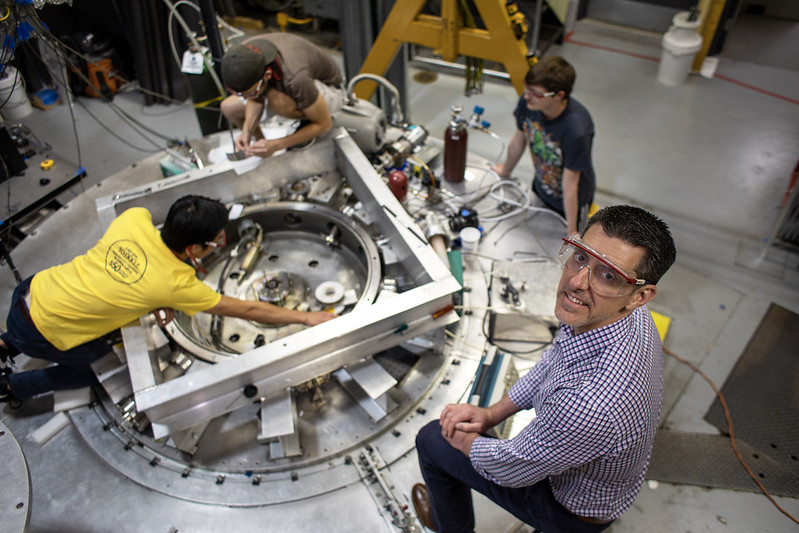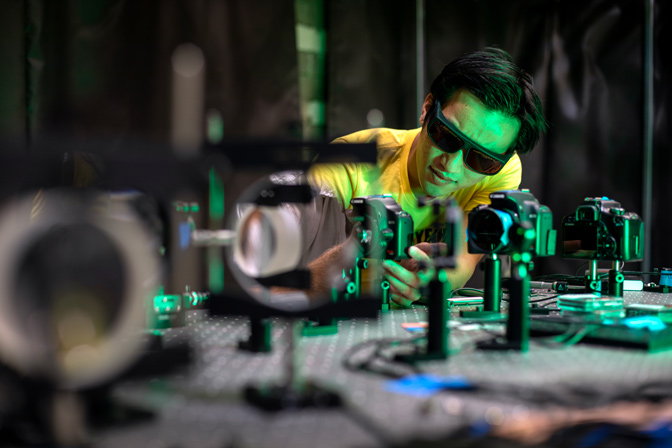
$27 million for laboratory astrophysics and nuclear fusion, led by U-M
Two centers, supported by the National Nuclear Security Administration, will explore physics relevant to modeling the performance of the aging nuclear weapons stockpile.

Two centers, supported by the National Nuclear Security Administration, will explore physics relevant to modeling the performance of the aging nuclear weapons stockpile.
Two Centers of Excellence for studying basic science surrounding how hot plasmas behave, funded by the National Nuclear Security Administration (NNSA), have been awarded to University of Michigan researchers.
One center—which simulates extreme astrophysics, such as exploding stars, in labs around the U.S—is renewed and expanded to $12.5 million over the next five years, having received $5 million in the previous funding cycle. Carolyn Kuranz, an associate professor of nuclear engineering and radiological sciences at U-M, has led the center since 2019.
The other center, which has been running since 2003, focuses on nuclear fusion and x-ray generation using pulsed power. The collaboration has been centered at Cornell University, but longtime leaders David Hammer and Bruce Kusse have decided to pass the torch. Ryan McBride, a professor of nuclear engineering and radiological sciences at U-M who has been with the center since beginning his PhD, was best positioned to take the reins. This center will receive $14.5 million over five years.

Both centers are part of the NNSA’s effort to ensure that the U.S. stockpile of nuclear weapons will perform as expected since the U.S. ceased testing more than 30 years ago. This means that as old components are replaced with new, which may not be a perfect match for the original part, detailed physics simulations are needed to understand how the device will work.
The centers explore hot plasmas: materials at such a high temperature that they take a step beyond the gas phase, becoming a soup of loose electrons and positively charged ions—the atoms that gave up those electrons. This is the stuff of stars, uranium and hydrogen bombs, jets spat out by black holes and more.
“There’s overlapping science between stockpile stewardship and astrophysical systems. They’re very extreme states with high pressures, densities and temperatures,” said Kuranz.
The center Kuranz leads, called the Center for High Energy Density Laboratory Astrophysics Research (CHEDAR), will explore four main aspects of plasmas and systems involving plasmas:

Kuranz and her colleagues will run experiments with lasers and machines that generate powerful magnetic pulses and then use that data to refine physics models that describe the dynamics they measure. Laser facilities include the National Ignition Facility, famous for breakthroughs in nuclear fusion reactions, and U-M’s Zetawatt-Equivalent Ultrashort Pulse Laser System (ZEUS), which will soon be the most powerful laser in the U.S.
When laser pulses dump energy into gas or metal targets, the metal vaporizes to form a plasma. That plasma can then be manipulated with subsequent laser pulses, enabling the team to explore a variety of conditions that can occur in plasmas.
In contrast, the center McBride leads will focus on approaches using powerful magnetic pulses, including devices at U-M, Cornell, and Sandia National Laboratories. The most common approach that the Center for Magnetic Acceleration, Compression and Heating (MACH) will use is Z-pinch implosions, which rely on magnetic fields to crush plasmas in cylindrical form toward the central “Z” axis.

The MACH team will focus on:
“The nice thing about the center is that it is extremely flexible,” said McBride. “It allows students to be creative and try out all kinds of new ideas. As long as our collaborators at the national labs are interested in the results, it’s fair game.”
The PhD graduates that come through the NNSA-funded centers are in high demand at the national labs as a generation of researchers approaches retirement. Students coming through programs like these may also land jobs at the NNSA itself or at new start-up companies trying to bring nuclear fusion to market as a viable source of sustainable electricity.

Partner universities in CHEDAR are the University of Notre Dame; the University of California, Los Angeles; and Rice University.
Ryan McClarren (BSE NERS ’03, MSE NERS ’04, PhD NERS ’07), an associate professor of aerospace and mechanical engineering, is leading the Notre Dame contingent.
Partner universities in MACH are Cornell University; Imperial College London; the Weizmann Institute of Science in Israel; the University of California, San Diego; Princeton University; the Massachusetts Institute of Technology; the University of New Mexico; the University of Washington, Seattle; and the University of Rochester, New York.
Both Centers will be collaborating with the NNSA labs: Los Alamos National Laboratory, Sandia National Laboratories, and Lawrence Livermore National Laboratory.